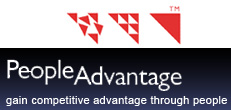To achieve significant improvements in competitiveness it is essential that:
· Sufficient in-house expertise in role design and remuneration exists
· Effective collaborative mechanisms exist to ensure staff agree to, and adhere to key change outcomes
Job Design and Remuneration
Conduct an audit to determine the effectiveness of current job design and remuneration practices. Key indicators of poor job design and remuneration practices include:
· People are unclear about their roles and do not understand what is expected
· Pay is perceived to be inequitable; and it cannot be demonstrated that there are no such inequities
· High performing people are not sufficiently rewarded
· People cannot see the possibility of a career path and do not understand what they have to do to progress within the organisation
· Focused, structured learning and development systems do not exist
· Effective internal selection systems and procedures do not exist and the organisation cannot ensure that the right person is selected for the job
The existence of any of the above will result in staff resisting significant improvements in their work.
Case Study
An organisation was experiencing lack of trust between management and professional staff due to the existence of the above problems. To improve trust the client needed to design new roles, career paths and a remuneration framework for the professional staff.
We helped the client to develop clear, transparent, objective role requirements, realistic career paths and a fair market based remuneration framework. As a result the professional staff enthusiastically embraced the new organisation direction.
Effective Collaborative Processes
Effective collaborative processes are not the same as consultative processes. Too many organisations confuse these concepts. The strength of the consultative committee can also be its weakness. Yes, it is essential that the people who do the work are involved in changing their work (strength), but change is threatening and this can deter many from pursuing major changes to their own jobs (weakness). Consultative committees can also be the platform to continue long standing conflicts rather than the basis for developing and implementing change.
The alternative is to conduct collaborative based workshops. These are structured so that jobs and work practices are redesigned at the same time. Redesigning jobs and changing work practices simultaneously is complex and usually requires the assistance of an expert facilitator – it is the most cost effective method for identifying and implementing significant change.
Management can evaluate the proposals generated during the workshops and determine the impact on the business. Healthy facilitated workshops result in trust between management and staff to quickly reach agreement on what, how and when to implement the new jobs and work practices.
Organisations often forget, or ignore, that staff are knowledgeable about how to save costs and increase productivity. Structured collaborative processes are an effective means of tapping into the intellectual assets of the organisation.
Alignment of Staff Performance to New Business Objectives
Collaborative based workshops cause staff to directly focus on critical business objectives. These objectives become the benchmarks or standards against which all proposed changes are matched. A proposal that does not meet the criteria is quickly eliminated.
Healthily structured collaborative workshops facilitate staff commitment to change. Why is this so? Because the more anxious staff feel about a change the greater is the resistance to change. However, healthy workshops provide a bridge between the old ways of working and the new. They provide the psychological security that staff need during the transition. This can have the effect of reducing staff anxiety resulting in greater openness, innovation and commitment to change. This is critical when the business is marginal and/or facing dangerous competitive threats.
Case Study
A client needed help to lead a consultative committee through the process of role redesign, development of performance criteria and modernise remuneration practices. The consultative committee had been meeting for eighteen months with very little progress. By applying tested and proven role design principles and facilitating collaboratively based workshops the company was able to redesign roles and career paths, define performance criteria and develop a modern remuneration framework in less than three months.
Summary
To achieve significant improvements in competitiveness ensure the business has access to expertise to collaboratively redesign roles.
Dallas Burgess
ã Organisation Renewal Pty Limited 2008 All Rights Reserved.
.

